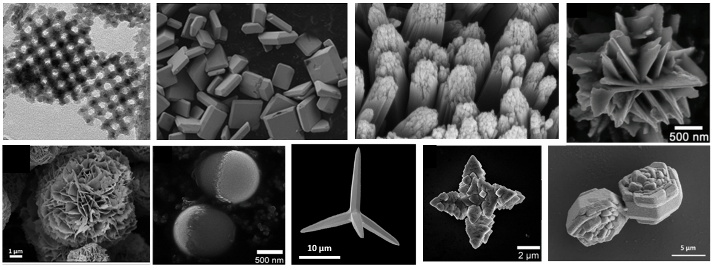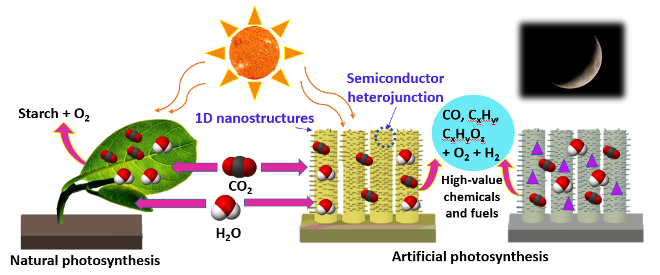Our research line is focused on a rational design of nanostructured photocatalytic systems based on multicomponent heterojunctions that can efficiently convert polluting compounds into high-value chemicals and fuels. On the other hand, we are also devoted to the development of light-driven micro/nanomotors for environmental applications. Both approaches are in line with the sustainable development goals from the EU, including clean energy generation and water decontamination.
Generation of solar fuels
We aim to develop nanostructured materials for the gas-phase conversion of CO2 in the presence of water under sun-like irradiation and dark cycles. Since the reaction will be performed in the gas phase, it is anticipated an improvement in the mass-transfer and selectivity rates, due to major coverage of CO2 onto the surface of the catalysts. Thus, our main goal is to fabricate supported photocatalysts with one-dimensional heterostructures for enhancing light harvesting and electron mobility, which will result in higher photocatalytic performances than those obtained with bulk semiconductors. On the other hand, we are also working on the design of effient photoactive systems for CH4 activation, which is usually considered as the “Holy Grail of Catalysis”. Our work is at the forefront of addressing pressing global energy and environmental challenges, aiming to contribute to a more sustainable and greener future.
Engineering of photoactive micro/nanorobots
Drawing inspiration from nature, our goal is to create versatile self-propelled micro/nanorobots made of photoresponsive materials, enabling them to move under light stimuli. These miniaturized photoactive devices offer precise control with spatiotemporal accuracy, making them highly appealing for a wide array of light-driven applications, ranging from energy, sensing, microbiology, targeted therapy, to environmental applications.
To address the challenge of limited light penetration in complex environments, we are focused on designing photorechargeable nanorobots with customized properties that that enable them to function even in the absence of light.


